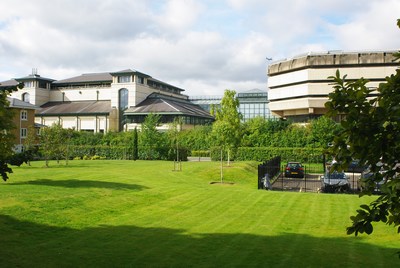Public Records Office
Almost immediately after Kew Railway Bridge there is a very large building on my right that is attempting to hide behind the trees. This building fulfils a very important function for all of us. It is the nation’s filing cabinet.
The National Archive holds all of our records for over 900 years from the days of the Domesday Book. It was formed by the merger of the Public Record Office, Historical Manuscripts Commission, Office of Public Sector Information and Her Majesties Stationery Office.
 The Public Records Office
The Public Records Office
This is much more than simple records of “hatches, matches and despatches”. The records cover all public sector, the military, legal aspects, court cases, government, wills, and census. Just about anything that has ever been recorded on parchment, paper, digital or web in England and Wales is here somewhere.
So how big a filing cabinet do we need for all of that lot? Well, it stands on a thirteen acre site and the original building has 33,400 square metres of floor space. It was designed by John Cecil Clavering and completed in 1977. This, however, was nowhere near large enough and an extension was opened in 1995 that added a further 31,750 square metres. Out of all of this a staggering 28,741 is given over to the repository or in simple terms the “filing cabinet”.
The records not only need space, but they need carefully looking after. First off, how do they know where everything is? For those of us who have to turn the house upside down every time we have to find some piece of paper that we wrote something down on how would we cope with having nearly 65,000 square metres in which to find it? Haystacks and needles spring to mind. They must have a really good memory to retrieve anything.
When they find what someone is looking for, how do they ensure that it is still in a condition to be of any use? The answer is that the storage areas are incubated, with humidity controlled at 50 degrees and the air temperature at a constant 16 degrees centigrade.
A great many of the records are not actually needed in “hard copy” because they are digitally recorded for easy retrieval and some of the information is readily available online, so you do not have to even visit in person.
< Previous Page | Next Page >